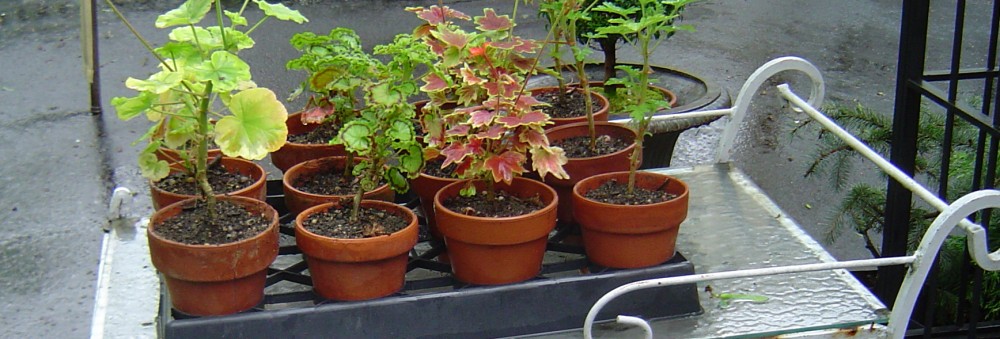The more I garden, the more I learn. There’s never a point when one feels all gardening knowledge is now acquired. It’s quite the opposite isn’t it – there’s so much I still don’t know. It’s what keeps a gardener excited and curious. And humble,
Curiosity is what drives me to experiment with new plants and projects. What thrives is cause to celebrate. What does not is never a failure because they teach us about the whys, whats and hows of the living world. We discover our own humanity.
In the course of creating my garden, the countless life lessons, the personal growth of mind and spirit and, the practical understanding of the natural world sustain me and give me the courage to live larger, take chances, stretch my skills outside the garden. So every new thing I learn as a gardener enriches every aspect of life. What a blessing.
Late last summer, I beheld a gorgeous plant at the Cornell Botanical Gardens. With a statuesque, bold silhouette, it called attention unabashedly. With strong burgundy-plum stems, heart-shaped, multi-lobed leaves glistening in the sunlight, the plant bore large, creamy yellow flowers with a crimson center. On closer examination hung long, tapering fruit capsules also colored maroon-plum. I coveted it instantly. It was a variety of okra!
I then noticed the more common green okra that is equally beautiful. Together the two look quite spectacular and peak at a time when so many plants are beginning to tire. While I enjoy okra ( there are many non-slimy ways to enjoy it) very much, I’m going to try growing them as ornamentals. Having obtained the seeds, I’ll start them indoors next month. Can’t wait to see how successful I’ll be. Fingers crossed. FYI – in India, okra is also called Lady’s Finger!
More recently, on a visit to Wave Hill, drooling over the cascades, pools and rivers of scilla in bloom, I expressed aloud how much I wished the scilla in my meadow would self-seed and naturalize as rampantly. Wave Hill gardener Harnek Singh told me that the effect was achieved by actually collecting the seeds and scattering them over the areas. Planting them as bulbs would either require planting thousands of them or waiting an interminably long time for them to multiply. Seeds! I must get them!
Something else I learned from Harnek on that visit was that yucca can be grown in my zone and cutting them down in the fall is a good way to manage the plant size.
Finally, along the entry path at Wave Hill, I noticed for the first time a feature that’s actually been there for some years. Sedge being used to hold a low embankment as the land slopes down to the path on one side. As the photograph below testifies, it looks so interesting and effective.
The four new things learned have given impetus to introduce some novel late summer flair with the okra – scheduled to happen this year hopefully, early spring beauty of scilla – but that will come into its own only in a couple of years after the seeds establish, grow and the plants mature. Meanwhile, I shall seek a variegated yucca to brighten a blah spot in the garden. I don’t have immediate need to use the sedge in the manner of Wave Hill but rest assured it will be applied when the opportunity arises in either mine or a client’s garden!
This is my kind of exciting. Growth in the garden as well as the gardener.
Reminder! Lyndhurst In Bloom and my Open Day cometh! Make your reservations!












(c) 2024 Shobha Vanchiswar
[do_widget “Blog Subscriptions (Jetpack)”]

